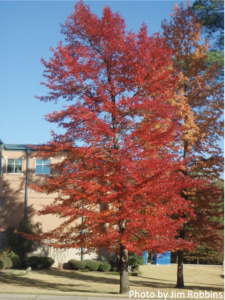How Trees Can Lower Your Energy Bill
go.ncsu.edu/readext?842420
en Español / em Português
El inglés es el idioma de control de esta página. En la medida en que haya algún conflicto entre la traducción al inglés y la traducción, el inglés prevalece.
Al hacer clic en el enlace de traducción se activa un servicio de traducción gratuito para convertir la página al español. Al igual que con cualquier traducción por Internet, la conversión no es sensible al contexto y puede que no traduzca el texto en su significado original. NC State Extension no garantiza la exactitud del texto traducido. Por favor, tenga en cuenta que algunas aplicaciones y/o servicios pueden no funcionar como se espera cuando se traducen.
Português
Inglês é o idioma de controle desta página. Na medida que haja algum conflito entre o texto original em Inglês e a tradução, o Inglês prevalece.
Ao clicar no link de tradução, um serviço gratuito de tradução será ativado para converter a página para o Português. Como em qualquer tradução pela internet, a conversão não é sensivel ao contexto e pode não ocorrer a tradução para o significado orginal. O serviço de Extensão da Carolina do Norte (NC State Extension) não garante a exatidão do texto traduzido. Por favor, observe que algumas funções ou serviços podem não funcionar como esperado após a tradução.
English
English is the controlling language of this page. To the extent there is any conflict between the English text and the translation, English controls.
Clicking on the translation link activates a free translation service to convert the page to Spanish. As with any Internet translation, the conversion is not context-sensitive and may not translate the text to its original meaning. NC State Extension does not guarantee the accuracy of the translated text. Please note that some applications and/or services may not function as expected when translated.
Collapse ▲Does your house never seem to stay warm during the winter? Over the course of the summer, does it seem like your air conditioning unit is constantly running? While our house’s heating and cooling systems do the best they can, winter winds zap the heat out of our houses before being replaced by intense summer sunshine that raises our house’s temperature at exactly the time that we want the temperature lower.
Our home landscape can have a huge impact on how well our houses maintain their internal, and our ideal, temperature. While outside temperatures fluctuate greatly, our landscape has the ability to consistently make our utility bills much lower. The US Department of Energy estimates that trees can help lower home energy bills by an average of 25%. Trees are an integral part of our landscape and make it both more beautiful and useable. Instead of needing to set up an umbrella to keep the summer sun off of you, it is often more enjoyable to relax in the shade of a large shade tree which not only keeps the sun off you, but cools the entire area through a process called evapotranspiration.
It may seem counterintuitive to think that trees can consistently help our houses maintain our ideal temperature. You may think, if trees are lowering temperature in the summer, shouldn’t they also lower temperature in the winter? Getting trees to work for us can take some initial planning that will pay off for decades! Tree species and tree placement is very important when using trees to alter our home environment.
The primary way that trees can help us during the summer is by shading our house or outdoor area. When picking trees to shade our house, we want to make sure those trees are deciduous and lose their leaves during the winter. Large shade trees should be placed to the east and west of your house to maximize their usefulness. When deciding which shade trees to plant, you must consider a number of things including the mature size, growth rate, and if the tree has strong structure. A few trees native to North Carolina that work very well as shade trees include red maple, black gum, river birch, bald cypress, and willow oak.
Trees can also help our houses maintain their temperature during the winter by blocking winds that wick heat away. When planting these trees, we must carefully place them so that they intercept winds but do not shade our house. To deflect winter winds, windbreaks made of trees and shrubs should be planted to the north and north-west of the house. While deciduous trees intercept some wind during the winter, the most effective winter windbreaks feature trees and bushes that are evergreen. A few native trees and shrubs that work well in south-central North Carolina include southern magnolia, American holly, sweet bay magnolia, columnar eastern redcedar, and southern waxmyrtle.
In addition to the benefits you see to your home energy bill, trees are a valuable addition to your property! They can improve your property values, slow water movement, provide habitat for wildlife, and much more. While the fall and spring are great times for tree planting, the winter can be the perfect time for planning!
Department of Energy https://www.energy.gov/energysaver/landscaping-energy-efficient-homes




